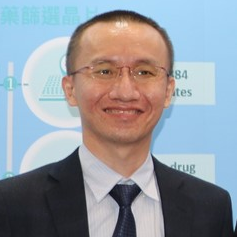Biomedical Composite Materials for Stem Cell Culture
A special issue of Polymers (ISSN 2073-4360). This special issue belongs to the section "Biobased and Biodegradable Polymers".
Deadline for manuscript submissions: closed (15 April 2023) | Viewed by 3619
Special Issue Editors
Interests: iPSC, GelMA, tissue engineering, stem cell, differetiation, cell culture
Interests: tissue engineering; biofabrication; 3D bioprinting; bioceramics; bioinspired materials; bio-inks; medical devices
Special Issues, Collections and Topics in MDPI journals
Special Issue Information
Dear Colleagues,
Biomedical composite materials have recently attracted much attention in the field of tissue engineering. The combination of organic or inorganic materials with natural or synthetic materials are especially popular strategies due to their capability to overcome each other’s shortcomings. The combination of materials not only improves manufacture processing, it also enhances physicochemical properties of biomedical composite materials in terms of mechanical properties, bioactivity and degradability. Therefore, there are many novel and new studies focusing on the development of biomedical composite materials for drugs and gene delivery, bioprinting, cell therapy as well as stem cell culture.
Stem cells are an extremely important cell type in the field of tissue engineering, and stem cell culture can be divided into two directions: one is to maintain the undifferentiated state of stem cells, and the other is the guidance and regulation of stem cell differentiation. Studying the effects of biomedical composite materials for stem cells will improve the development of tissue engineering.
The purpose of this Special Issue is to publish cutting-edge applications related to advanced Biomedical composite materials for stem cell culture. All kinds of composite materials either synthetic/natural polymers or newly developed ones and stem cell types such as induced pluripotent stem cells(iPSC), mesenchymal stem cells(MSC) and adult stem cells, are all welcome.
It is a great pleasure to invite you to submit a manuscript for this Special Issue of Polymers.
Dr. Huai-En Lu
Dr. Ming-You Shie
Guest Editors
Manuscript Submission Information
Manuscripts should be submitted online at www.mdpi.com by registering and logging in to this website. Once you are registered, click here to go to the submission form. Manuscripts can be submitted until the deadline. All submissions that pass pre-check are peer-reviewed. Accepted papers will be published continuously in the journal (as soon as accepted) and will be listed together on the special issue website. Research articles, review articles as well as short communications are invited. For planned papers, a title and short abstract (about 100 words) can be sent to the Editorial Office for announcement on this website.
Submitted manuscripts should not have been published previously, nor be under consideration for publication elsewhere (except conference proceedings papers). All manuscripts are thoroughly refereed through a single-blind peer-review process. A guide for authors and other relevant information for submission of manuscripts is available on the Instructions for Authors page. Polymers is an international peer-reviewed open access semimonthly journal published by MDPI.
Please visit the Instructions for Authors page before submitting a manuscript. The Article Processing Charge (APC) for publication in this open access journal is 2700 CHF (Swiss Francs). Submitted papers should be well formatted and use good English. Authors may use MDPI's English editing service prior to publication or during author revisions.
Keywords
- biomolecule
- biomaterial
- biopolymer
- 3D printing
- Bio-ink
- multifunctional biomaterials
- scaffolds
- biofabrication
- induced pluripotent stem cell
- mesenchymal stem cells
- adult stem cells
Benefits of Publishing in a Special Issue
- Ease of navigation: Grouping papers by topic helps scholars navigate broad scope journals more efficiently.
- Greater discoverability: Special Issues support the reach and impact of scientific research. Articles in Special Issues are more discoverable and cited more frequently.
- Expansion of research network: Special Issues facilitate connections among authors, fostering scientific collaborations.
- External promotion: Articles in Special Issues are often promoted through the journal's social media, increasing their visibility.
- Reprint: MDPI Books provides the opportunity to republish successful Special Issues in book format, both online and in print.
Further information on MDPI's Special Issue policies can be found here.







